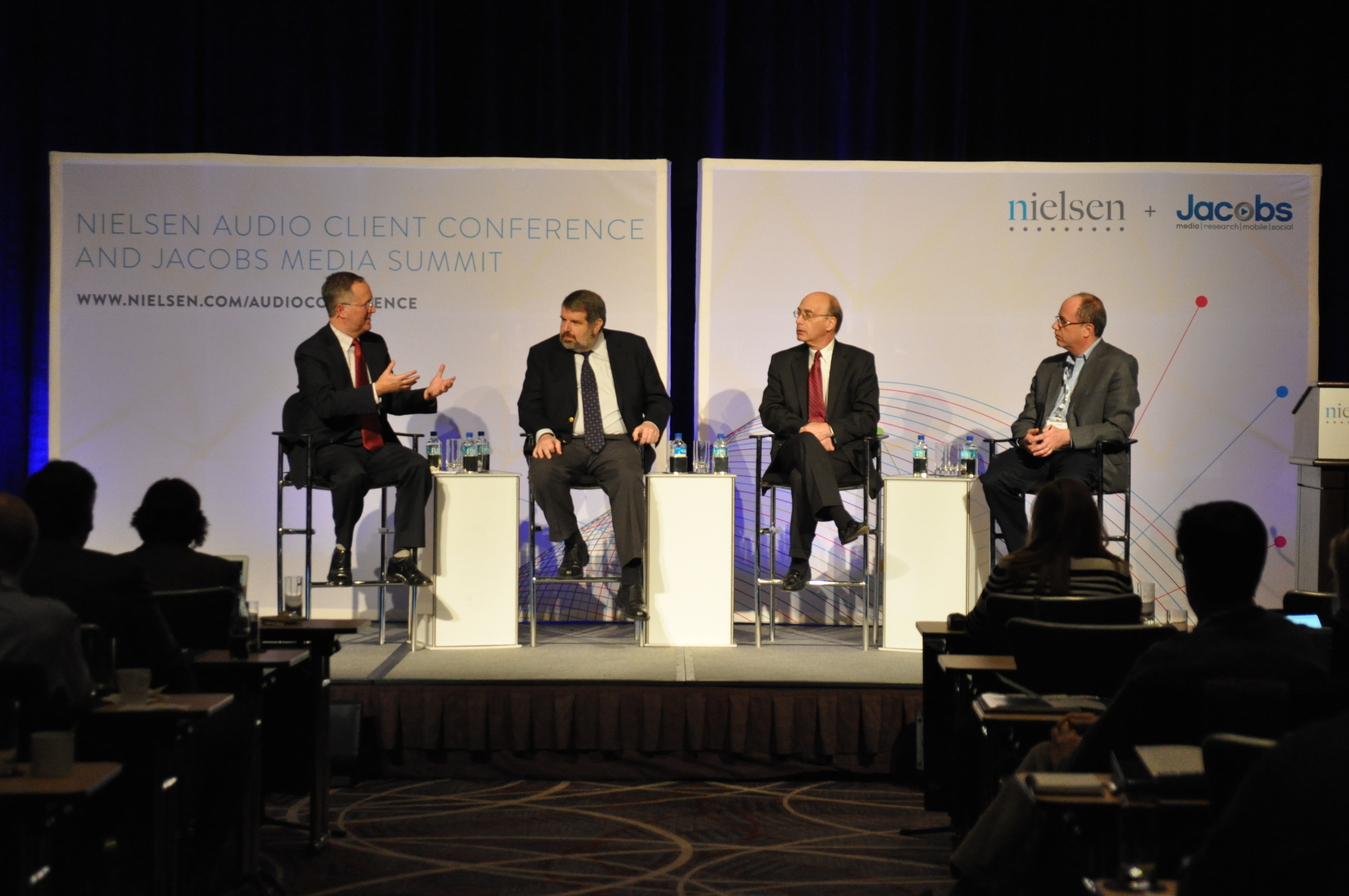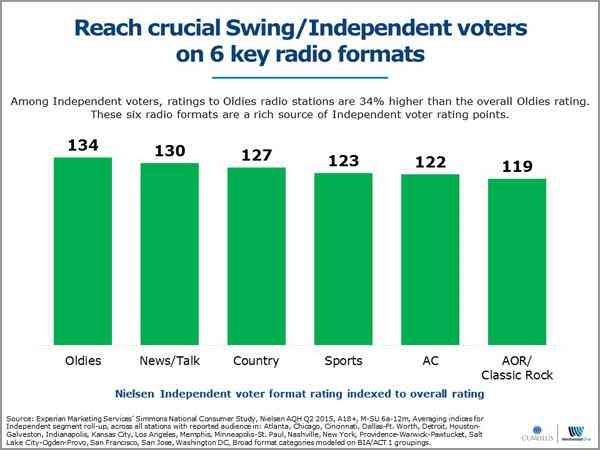
The one thing for certain in this Presidential election cycle is that nothing is certain. All bets are off. Or as the psychedelic comedy troupe Firesign Theatre put it, “Everything You Know Is Wrong.”
Maybe we can thank Donald Trump for that. But the dawning reality for political consultants, pundits, and commentators across the land is that radio is a highly effective medium for communicating a political message and motivating voters.
Now many of you reading this post may be thinking this is no revelation. Since the days of F.D.R., hasn’t radio been an effective political marketing weapon? But the fact is, many campaign gurus have eschewed radio in recent years. In fact, a great example of radio earning no respect occurred at the very first Nielsen Client Conference back in December 2013.
Edison Research’s Larry Rosin and Joe Lenski moderated a panel featuring Republican and Democratic mavens David Winston and Mark Mellman respectively. Just two and half years ago, both of these guys looked a crowd of radio programmers, managers, and consultants right in the eye and announced that radio was an unproven, largely ineffective tool for their campaigns. They cited a lack of data and noted there was no provable way to demonstrate radio’s ROI. Mellman also noted that radio is a difficult medium to buy and target effectively.

We blogged extensively about that session in a post called “Political Animals,” and discussed its implications for the radio community. As campaign spend was moving into TV, radio appeared to be sadly left behind.
Yet here we are on the cusp of the primary season ending and the two parties headed to their respective conventions, and radio somehow finds itself back in favor. In a MediaPost feature, “Red, White & Blog,” Philip Rosenstein quotes a recent Borrell Associates study that upped overall predictions for political ad spend for this election cycle. And the big category winner?
RADIO
Borrell increased radio’s estimated political advertising expenditure by nearly 11%. Rosenstein explains that “radio’s ubiquity provides a central draw for advertisers searching for means to target unique demographic groups.” An interesting change of fortune, to be sure.
Somehow in under three years, radio has become easy to target. In fact, the post included this Nielsen chart of radio formats that index well for reaching independent voters, the elusive people who could definitely swing an election outcome:

Rosenstein concludes that radio is “a particularly attractive medium when targeting voters who could potentially decide a local, statewide or even national election.”
Flip-flopping?
Spin control?
Who knew? Looks like radio is politically correct again.
And it all apparently happened in a Donald Trump minute.
- Why “Dance With Those Who Brung You” Should Be Radio’s Operating Philosophy In 2025 - April 29, 2025
- The Exponential Value of Nurturing Radio Superfans - April 28, 2025
- What To Do If Your Radio Station Goes Through A Midlife Crisis - April 25, 2025




As always Fred, a strong read. It will be interesting to see if this actually comes to fruition. While it’s great to hear radio being portrayed in a more positive light…living in a swing state, I’ve “seen and heard this play before”.
Maybe this year, the darling of these campaigns, TV, will be seen for what it truly is during the political season. A difficult to target, easily paused and time shifted, hundreds of channels and options, poorly measured medium… oh yeah…and a politically cluttered mess.
Time will tell. As will the voters.
I’m hoping this year is, in fact, different. It was nice to read the MediaPost story, and hopefully, we’ll see the result. Yes, and I so cringed at that “difficult to target” line at that session. Arrggghhhh! Thanks for the comment.